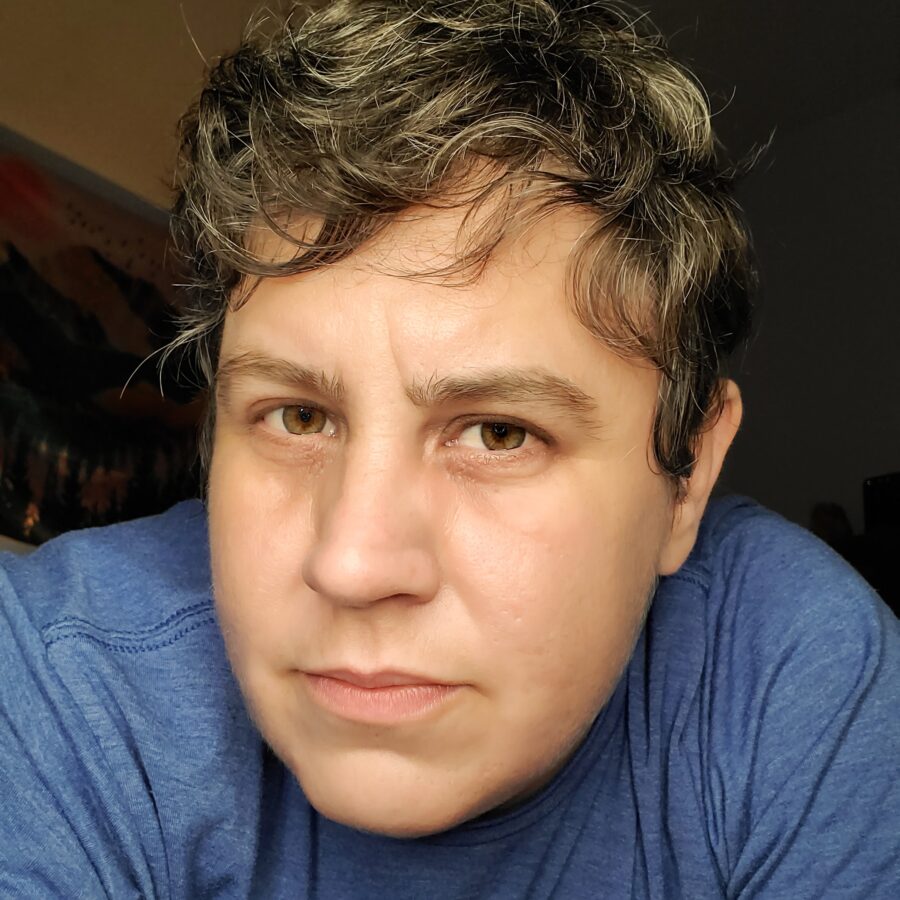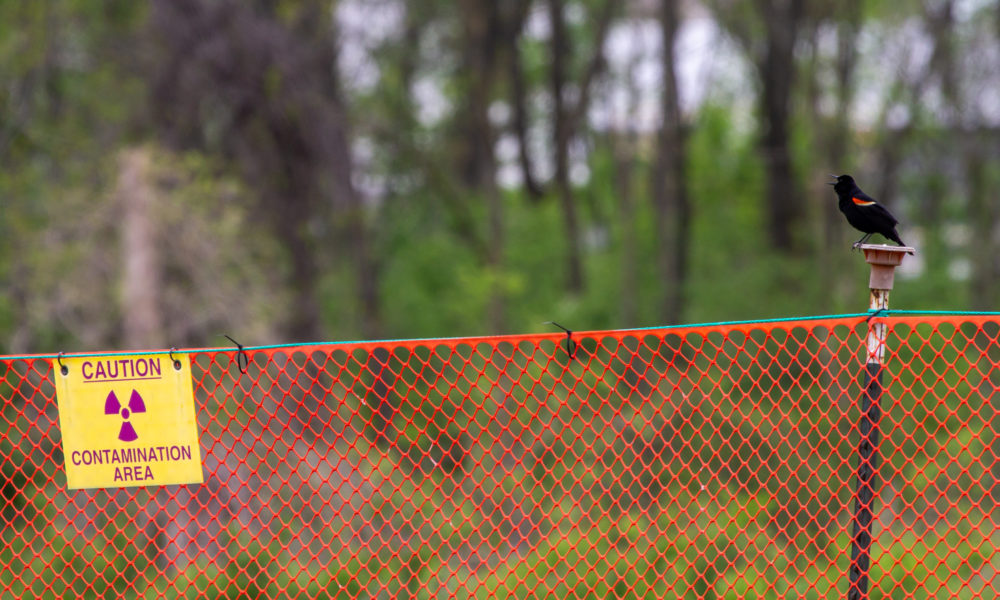The following is a blog from the Union of Concerned Scientists. The original blog can also be found on their website here.
By Chanese A. Forté, Scientist
Nuclear frontline communities are people and communities directly harmed by the development, production, testing, clean-up, and waste storage of nuclear weapons and nuclear materials. Many people don’t know they are exposed.
I recently posted blogs on nuclear materials contamination in Missouri, including the good news that the United States Senate recently voted in favor of expanding the Radiation Exposure Compensation Act (RECA) to include nuclear frontline communities in Missouri, like those that Christen Commuso, the Community Outreach Specialist for St. Louis at the Missouri Coalition for The Environment, works with and is from.
Nuclear waste doesn’t care who you are—doesn’t matter how rich you are or what your
background is—nuclear materials in your community will hurt you.
Christen Commuso, Missouri Coalition for The Environment
RECA provides compensation to some downwind and on-site participants of some above-ground nuclear weapons tests and some uranium workers for their illnesses. Many frontline communities are exposed to more than just nuclear materials. For example, Montana missileers and PCBs or northwestern New Mexico uranium mines and heavy metals further contribute to their cumulative burdens as can other life factors including income or access to food, housing, and healthcare.
These extra exposures and life factors are referred to as cumulative burdens and can result in worsened individual health outcomes and increased community vulnerability to harms. The US Army Corps of Engineers (ACE) Formerly Utilized Sites Remedial Action Program (FUSRAP) is the leading program for identifying and cleaning up former nuclear sites. FUSRAP does not currently consider cumulative burdens in setting clean up standards.
We’re very well aware that most people don’t know about these toxic exposures especially in certain North County neighborhoods where a lot of rental properties have taken over.
Christen Commuso, Missouri Coalition for The Environment
Regulatory science of chemical hazards is shifting to include cumulative impacts
While the research community has been investigating the effects of cumulative burdens for the past two years, cumulative impact assessments of environmental chemicals have also taken a long time to show up in mainstream public health regulatory science in the United States.
However, in January 2021, President Biden passed two Executive Orders (EO) (EO 13985 and EO 14008) which focus on racial equity and supporting underserved communities as it pertains to environmental health. These EOs cleared the way for public health research to focus on these pressing cumulative impacts on frontline communities.
In Fall of 2022, the United States Centers for Disease Control and Prevention Agency for Toxic Substances and Drug Registry (ATSDR) created the Environmental Justice Index Toolkit to capture and better understand the impacts of cumulative burdens on frontline communities. ATSDR also has the Social Vulnerability Index to assist decision makers in assessing communities that will need extra assistance in an emergency or disease intervention; a way to assess susceptibility to community disruption (using 16 US Census variables).
Additionally, the US Environmental Protection Agency (EPA) also recently released a report on cumulative impacts as well.
And as Kristie Ellickson, Kendall Fellow in UCS’s Center for Science and Democracy, pointed out in her blog on cumulative burdens and frontline communities, President Biden continues to apply pressure on federal agencies to commit to environmental justice. Committing to better protecting overburdened communities from pollution and environmental harms of nuclear materials should also be the focus of regulatory scientists right now.
Policies, including those that address the legacy of the nuclear weapons complex, should account for these cumulative burdens and center the voices of communities and include the expertise of public health scientists.
Since 1945, nuclear weapons have had devastating health impacts on US and global communities, even without being used in conflict.
In the days following, the RECA expansion vote passed the Senate, I spoke to Christen Commuso—the Community Outreach Specialist for St. Louis at the Missouri Coalition for The Environment. She has been involved in the work around nuclear materials exposure in the St Louis area left from the Manhattan Project about how multiple exposures and life factors affect her community.

Chanese Forté (CF): How do cumulative burdens affect people residing in the St. Louis area, Westlake, and North County Missouri?
Christen Commuso (CC): Chemistry research in general we don’t look enough at chemical mixtures and how chemicals interact with each other or how this waste interacts with the environment and then with the human body.
There are so many things to look at as well—you know? Does this person have access to medical care? What are their stress levels? Is their body able to repair the same as a person in an affluent rich neighborhood with access to these things? And I would say the answer is no.
The people fighting for nuclear justice, we’re sick too!
Christen Commuso, Missouri Coalition for The Environment
I do have the privilege of having a good job that pays for me to have health insurance and yet I still have to choose which procedures and tests I will have in a year. Simply because I just can’t afford it. And that is more of a testament to our medical system and how expensive it can be just to live.
I can only imagine how hard it is for people that are working two jobs or just working to put food on the table. They’re definitely not going and getting the help that they need, so I think that if this new RECA expansion passes this will be that opportunity for people to finally get the medical care they deserve.
CF: In addition to RECA expansion possibly being signed into law and inclusion of cumulative impact assessments, how can federal atomic clean up efforts better support communities?
CC: The Army Corps of Engineers (ACE) the Formerly Utilized Sites Remedial Action Program (FUSRAP) have a five-year review that’s coming up and from our standpoint—reading the documents and the data—we don’t believe their cleanup standards are the best.
What the EPA would consider to be contamination is a lot less than what the ACE considers contamination–specifically surface-level soils (0-6 inches below the surface). EPA considers combinations of Radium-226 and Radium-228, Thorium-230 and Thorium-232, and Uranium-235 and Uranium-238 for their 5/5/50 PicoCuries per Gram (pCi/g) clean up standard. Whereas ACE only focuses on removing Radium-226, Thorium-230, and Uranium-238 to a 5/14/50 pCi/g clean up standard.
The ACE have their remediation goals which allow them to leave waste behind that the EPA would still consider contamination.
For example, toxic levels above naturally occurring background levels that are still below their cleanup levels has been dubbed ‘tweener dirt’ so that is toxic waste that is legally allowed to be left in the community.
This toxic waste has been out here for so long, communities have been built up around it and a lot of times this waste is underneath roads or buildings or referred to as ‘inaccessible soils’ which do not require being cleaned, until a highway or construction project or something else happens.
We will continue to try to bring legislation in the state that we brought last session to include more transparency in the FUSRAP program, so that if someone calls Missouri One Call (aka DigRite system), they will be able to find out if their property has been or is currently contaminated with hazardous waste.
CF: For people who are residing in Missouri, how and where do they find ways to give to their community? Or find support for their needs?
CC: Volunteers can get on our Missouri Coalition for the Environment’s website and stay tuned. Sign up for newsletters or things like more canvassing events to educate the community and connect people to resources.
There is also the Community Connections Health Clinic in Missouri (St. Louis and Bridgeton) that was created using settlement funds from the state of Missouri’s lawsuit against Republic Services for negligence and environmental violations at the Bridgeton Landfill.
This clinic can provide your primary care, well women’s exams, vaccines, and they also help with getting people signed up for Medicaid, utility assistance, or food access.
People can also review the Agency for Toxic Substances and Disease Registry’s (ATSDR’s) recommendations for preventing exposure if you live along Coldwater Creek. Also, the ATSDR’s Key Findings and Recommendations from their 2019 health assessment is good to understand.
There is also the radiation exposure education and screening which is a grant program that helps healthcare providers do screenings, education, and outreach. It also helps people know what documents or information to gather to have their health records covered.
This new bill also includes the option to provide an affidavit saying you lived in the area instead of a mailing address to accommodate nontraditional addresses like folks who are living on tribal land or are unhoused.
Additionally, Missouri Coalition for The Environment and Just Moms STL have formed a partnership dubbed the STL Toxic Waste Alliance. We have a Facebook page, and folks can follow to stay up-to-date and look for any calls to action.
Missouri residents can learn more ways to take action on the Missouri Coalition for the Environment website.
How to get involved
Thank your senator(s) who voted to expand coverage to nuclear frontline communities, including downwinders, and urge your member of the House of Representatives to to urge them to support the full adoption of the amendment to the NDAA that has already passed the Senate. Readers can also learn more about this at expandreca.org.
If you have been impacted by nuclear weapons testing or uranium mining, we want to hear from you. You can share your story.

